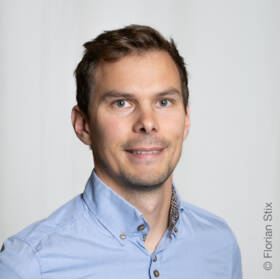Analysis and nowcasting of extreme weather events using data from radio links
Background
Due to climate change there is a significant rise of extreme weather events. Localised and timely accurate short-term predictions -for up to a maximum of 12 hours -of such weather events offer great advantages. They allow for the implementation of appropriate countermeasures to minimize damage as well as better planning in general. Short-term predictions require a dense network of measurements for the provision of up-to-date weather data. Such measurements can come from either ground based stations or remote systems like weather radar or satellites. In large areas of Austria, however,
the number of ground stations is limited due to rough terrain, while radar data may be lacking for certain regions due to topographical reasons.
Project content
In the LINK project, physical data from commercial microwave link (CML) networks as used in mobile telephony are used to gain precise local rainfall information. The continuous extension of CML networks generates large amounts of data about the physical properties of radio transmissions over large areas. Network operating companies routinely measure these properties (such as the loss in signal strength during transmission between antennas) in order to guarantee network quality.
Project objective
The aim of the project is to evaluate the usability of CML data for the prediction of extreme weather events, using the following approach:
- Analysing raw data from CML in respect to its quality and error characteristics using artificial intelligence (AI) (especially machine learning) methods.
- Assimilating the adjusted, pre-processed, and aggregated data into numerical weather prediction models.
- Evaluation and validation of the benefits of the resulting analysis and forecast data sets in cooperation with the public utility provider.
Project outcome
The results concerning the usability of microwave data and their use in a prediction model are of high interest for Numerical Weather Protection. Mobile phone providers benefit from methods and findings on how the AI-based combination of weather and microwave data can be used to clearly attribute failures and disturbances to weather phenomena. This can be used to derive technical measures and solutions.
You want to know more? Feel free to ask!
Service and Competence Center for Higher Education Development and Quality Management
Researcher IT Security (BA)
Department of Computer Science and Security
- GeoSphere Austria (formerly know as ZAMG)
- Hutchison Drei Austria GmbH
- Amt der Steiermärkischen Landesregierung, Abteilung 14 – Wasserwirtschaft, Ressourcen und Nachhaltigkeit, Referat Hydrographie


